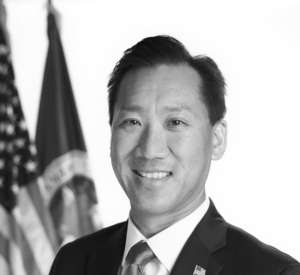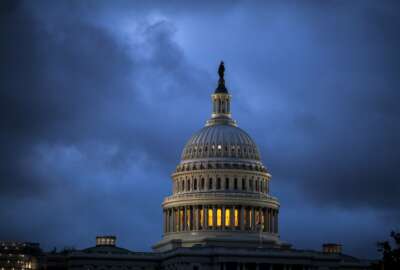
OPM submits 4 familiar retirement proposals to the House for consideration
The Office of Personnel Management detailed several significant proposals that would impact the current federal employee retirement system.
Best listening experience is on Chrome, Firefox or Safari. Subscribe to Federal Drive’s daily audio interviews on Apple Podcasts or PodcastOne.
The Office of Personnel Management has submitted several proposals that would significantly change the existing retirement system for current and future federal employees.
In a letter to House Speaker Paul Ryan (R-Wis.), OPM Director Jeff Pon outlined four major recommendations. Ultimately, the proposals would require current and future federal employees to contribute more to their retirement.
The legislative proposals would have the deepest impacts on Federal Employees’ Retirement System (FERS) participants, but Civil Service Retirement System (CSRS) participants would feel some effects as well.
OPM’s proposals mimic those that President Donald Trump has recommended during his past two budget requests. In a call with reporters last week, Pon suggested his agency would be aggressive and ambitious in making a wide variety of policy recommendations in the next six-to-seven months.
But Pon’s May 4 letter provides much more detail, including legislative language.
Specifically, OPM proposed:
- A increase in employee contributions by 1 percent per year “until the employee is contributing half of the current regular FERS employee normal cost percentage,”
- An elimination of the cost-of-living adjustment (COLA) for current and future FERS participants and a 0.5 percent cut to the COLA for CSRS participants of what the typical formula currently allows,
- Basing future retirement benefits on the average of an employee’s highest five years of salary, and
- An elimination of the FERS annuity supplement and the supplemental annuity for survivor annuitants, with some exceptions.
In total, OPM expects these proposals would save $143.5 billion over the next 10 years.
According to the American Federation of Government Employees (AFGE), which obtained OPM’s proposals and transmitted them to the media, the Trump administration wants to include these changes in the fiscal 2019 defense authorization act.

“Federal offices across the country are struggling to recruit and retain workers because federal wages and benefits are falling further behind the private sector,” AFGE National President J. David Cox said in a statement. “Yet the Trump administration wants to freeze employees’ wages next year and now is proposing to take away the retirement benefits they’ve worked a lifetime to earn.”
OPM, however, painted a different picture.
“The employee retirement landscape continues to evolve as private companies are providing less compensation in the form of retirement benefits,” Pon wrote. “The shift away from defined-benefit programs and cost-of-living adjustments for annuitants is part of that evolution. By comparison, the federal government continues to offer a generous package of retirement benefits.”
Unsurprisingly, OPM’s recommendations have the president’s and the Office of Management and Budget’s blessing.
“OMB further advises that it is willing to work with the Congress to ensure deficit savings are realized from the proposal to increase the contributions of federal employees and reduce the agency share of such costs by enacting legislation to reduce the non-defense discretionary caps starting in fiscal year 2019,” Pon wrote.
Congress in February passed a two-year deal that raised discretionary spending caps for defense and domestic programs. Federal employee groups generally saw the deal as a win, because the law made no mention of using the federal workforce and its retirement system to offset higher spending caps and set some sense of certainty for the next two years.
But attaching these legislative proposals to the 2019 NDAA could create some chaos for lawmakers, who would have to pass the authorization bill through regular order. Congress has passed the defense authorization act every year for at least the past 50 years.
Rep. Gerry Connolly (D-Va.) said he and his colleagues would consider amendments and other options to remove these proposals from the NDAA, if they are included.
“[We’ll be] trying to persuade folks on the Armed Services Committee they have enough issues they need to be concerned about,” Connolly said in an interview. “Do they really want to take on this set that just could weigh down the bill?”
Federal employee groups also decried the introduction of these proposals.
“There are certainly federal government operations, such as hiring times and information technology, that will benefit from modernization and reforms,” National Active and Retired Federal Employees Association President Richard Thissen said in a statement. “But these proposed cuts are being proposed absent a discussion around a comprehensive civil service modernization package that the OPM director has said is forthcoming. These are benefit cuts for the sake of benefit cuts. They are nothing less than a direct attack on our nation’s public servants.”
The timing of the release of the retirements proposals couldn’t come at a worse time, both Connolly and federal employee groups said. Public Service Recognition Week started Sunday and runs through May 12.
“This is a terrible way to celebrate public service week,” Connolly said. “Shame on the Trump administration for conflating the two.”
Read more about the agency’s specific proposals below.
Increase in employee contributions
Who it applies to: FERS employees
What it means: Applicable employees would be required to fund a greater portion of their retirement benefit over time.
How it would work: FERS participants would contribute 1 percent more toward their annuities each year until they’re contributing 7.25 percent of their basic pay — about half of the current total annuity contribution rate of 14.5 percent, according to OPM.
Currently, FERS participants contribute anywhere from 0.8 percent to 4.4 percent of their basic pay, depending on the year they were hired.
Because of those distinctions, different employee groups would reach the end of the scheduled contribution increases at different times, but generally, all FERS participants would contribute 7.25 percent by Oct. 1, 2020 through Oct. 1, 2024, OPM said.
OPM’s legislative proposal details a schedule of recommended contribution increases for each category of employee.
COLA elimination
Who it applies to: FERS and CSRS employees
What it means: Most FERS participants would no longer receive annual cost-of-living adjustments. For CSRS participants, their COLAs would be 0.5 percent less than what the typical formula allowed in the past.
High-five
Who it applies to: FERS and CSRS employees
How it would work: OPM would average an employee’s highest five consecutive years of pay to calculate an annuitant’s salary. Currently, OPM uses an employee’s highest three consecutive years.
What it means: Generally, federal employees would likely see lower annuities using a five-year calculation over a three-year one.
Annuity supplements
Who it applies to: new retirees and survivor annuitants
What it means: The proposal would eliminate the special supplement that federal employees who retire before they’re Social Security eligible receive at age 62.
OPM did describe some exceptions. Former spouses may continue to receive a FERS annuity when a court order specifically divides one, for example.
Copyright © 2025 Federal News Network. All rights reserved. This website is not intended for users located within the European Economic Area.
Nicole Ogrysko is a reporter for Federal News Network focusing on the federal workforce and federal pay and benefits.
Follow @nogryskoWFED
Related Stories






